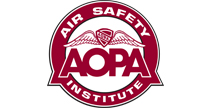Low altitude, out of practice a deadly combination
(CEN09FA147)
 By David Jack Kenny
By David Jack Kenny
Pilots in much of the country find winter weather unfriendly. Ice-laden clouds; slick, contaminated runways; and bitter surface temperatures conspire to keep us on the ground, sometimes for weeks at a time. Some simply put their aircraft into storage, and then bring them back to life after conditions moderate. Those who keep flying may need to wait for breaks in the weather, and then make the most of those unpredictable opportunities.
Prolonged inactivity erodes the whole range of flying skills, and stick-and-rudder airmanship in particular can’t really be practiced on the ground (at least, outside a full-motion simulator). Pilots returning to the air after a long time off do well to spend some time getting their flying muscles back into shape and their heads back in the game - and be realistic about whether this would best be done under professional supervision.
On Feb. 1, 2009, a 1974 Mooney M20C crashed near Elbert, Colo., killing the solo pilot. No one saw the accident; someone who lived nearby found the wreckage in a ravine. There were no ground scars leading to the impact crater, and the airplane’s tail was almost intact. The Mooney hit nose-down with the left wing low.
The weather was clear, dry, and relatively warm at 5 degrees C, though the winds were gusting to 17 knots and swinging between 330 degrees and 170 degrees. The airplane had departed from Centennial Airport not long before the accident, and its radar track depicted a series of “back-and-forth” maneuvers that took it southeast of the airport. The last radar hit showed it in a gentle right turn at about 1,300 feet agl … at a groundspeed of 50 knots. The NTSB concluded that “[t]he accident flight profile was consistent with a pilot proficiency flight and the maneuver preceding the crash that of practicing slow-flight maneuvering.”
The 53-year-old private pilot had 412 hours of flight experience. He’d flown one hour the day before the accident, making three takeoffs and landings, but his last flight before that had been almost four months earlier, on Oct. 2. He had logged about 31 hours during all of 2008.
Taking advantage of clear skies to brush up on airwork is a fine idea but merits some attention to the details. An altitude of 1,300 feet agl is low to be practicing slow flight in the first place; the Private Pilot Practical Test Standards require “an entry altitude that will allow the task to be completed no lower than 1,500 feet agl” for slow flight and stalls. The implication is that it would be wise to plan for at least 1,500 feet of cushion after recovery from an inadvertent stall, and the gusty, highly variable winds made an inadvertent stall more likely. If the airplane was poorly coordinated, a stall could become a spin, probably unrecoverable at that altitude. The accident site was beyond the boundaries of Denver’s Class B airspace, and the skies were clear; there was no reason the pilot couldn’t have given himself a few thousand feet more breathing room.
The decision to go solo is also open to question. After a four-month layoff, even a seasoned pilot won’t be at his sharpest. A low-timer without much recent experience could fairly expect his first attempts at the maneuvers to get a little sloppy - maybe sloppy enough to pose some genuine risks. Engaging a CFI to provide some coaching makes more efficient use of the flight time. Inviting the scrutiny of a competent instructor might also have saved this pilot’s life.